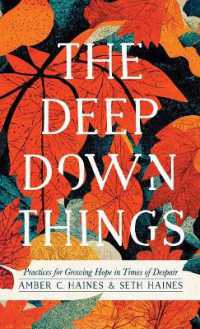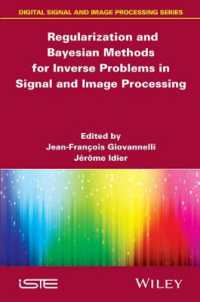Full Description
Combining theory and practical knowledge, this guide is an essential companion to library and information specialists looking for an introduction to and solid grounding in aspects of new cataloguing theory, practice and trends.
The book investigates the concepts of 'entity' and 'identity' in the field of cataloguing as a starting point for analysing and illustrating 'entity modelling' - an innovative contribution to third generation cataloguing, which involves Linked Open Data. Drawing on the history of cataloguing as well as elements of philosophy and computer science, the work sets out how to apply entity modelling in GLAM settings and facilitate communication and interoperability across the GLAM sector.
Analysing a range of international case studies relating to specific bibliographic entries, readers will gain an in-depth understanding of the concepts and practices involved in entity modelling to transform cataloguing at their own libraries and institutions.
Contents
Figures and Tables
About the Author
Prologue by Philip E. Schreur
Foreword by Carlo Bianchini
Foreword by Maurizio Vivarelli
Introduction by Mauro Guerrini: Entity Modelling or Rather, the Next Generation of Cataloguing
Acknowledgements
List of Acronyms
The Context
The theme\ The historical context\ The state of the art\ Research sources and articulation of the work
1. I Contain Multitudes
Introduction\ Questions to resolve\ Entity and Identity\ Diachronic and synchronic identities in the bibliographic universe\ Conclusions on the concepts of entity and identity
2. The World is My Representation
Introduction\ On the record: the declaration of a new course to adapt to the language of the web\ What is a real-world object?\ Entity resolution and entity modelling\ Conclusions on the transition from record to entity modelling
3. Panta Rei, or the Fluidity of the Universe
Introduction\ The entity as a prism\ Capturing things in change\ Examples of emerging entities in cataloguing\ The transience of intrinsic properties, the persistence of relational properties\ Conclusions on change and persistence
4. O Romeo, Romeo, Wherefore Art Thou Romeo?
Introduction\ The agent in cataloguing tradition\ The treatment of popes in cataloguing tradition\ Identifying entities and identities through URIs\ Conclusions on entity modelling and the significance of changing collective mindsets\ Final reflections
Appendix: Attributes of the entity svde:opus and svde:work
Endnotes
Bibliography
Index







